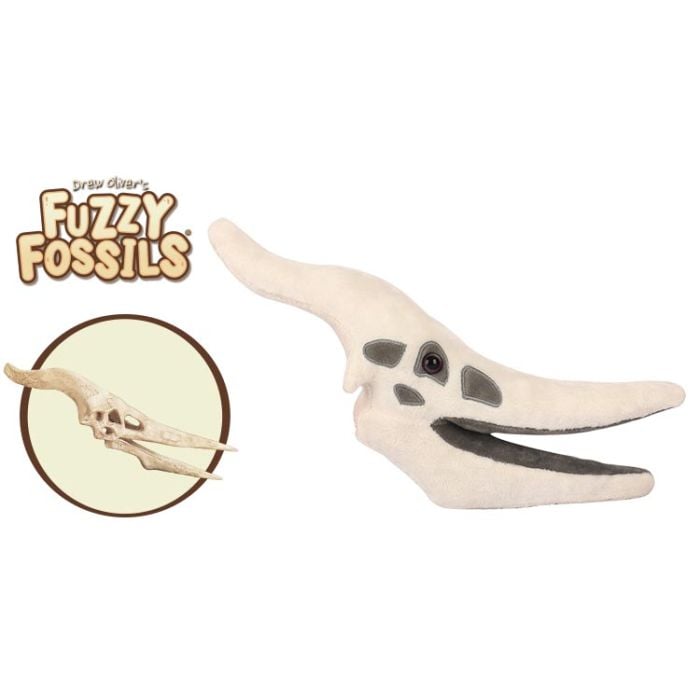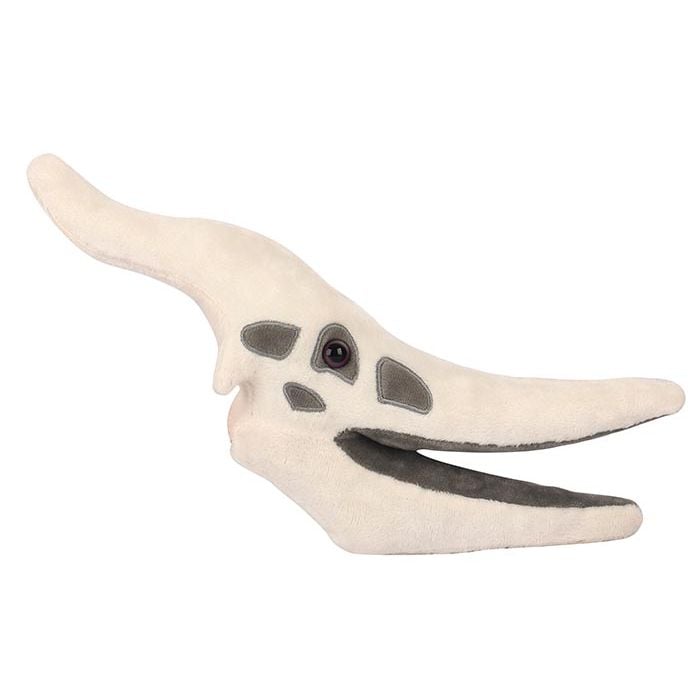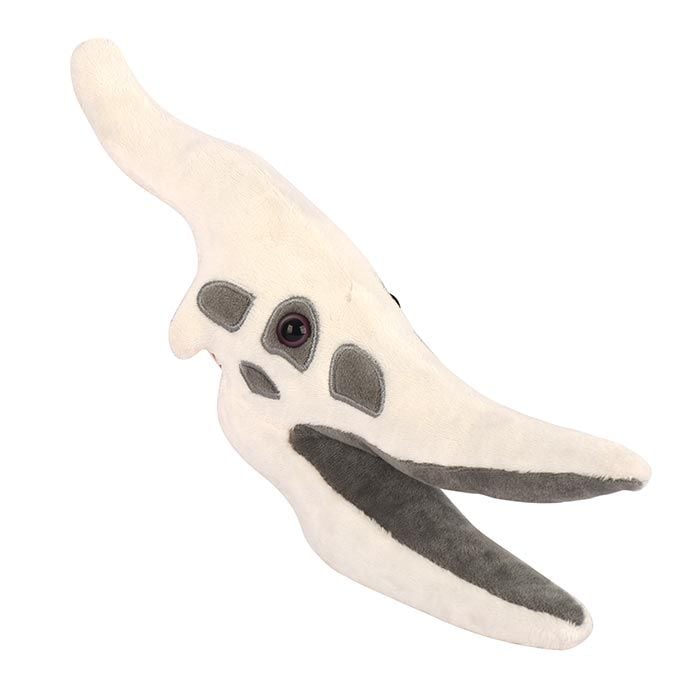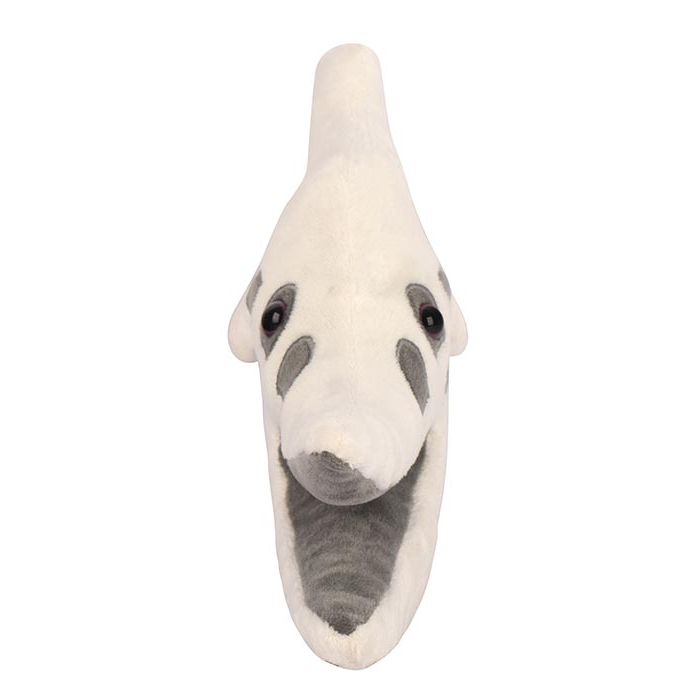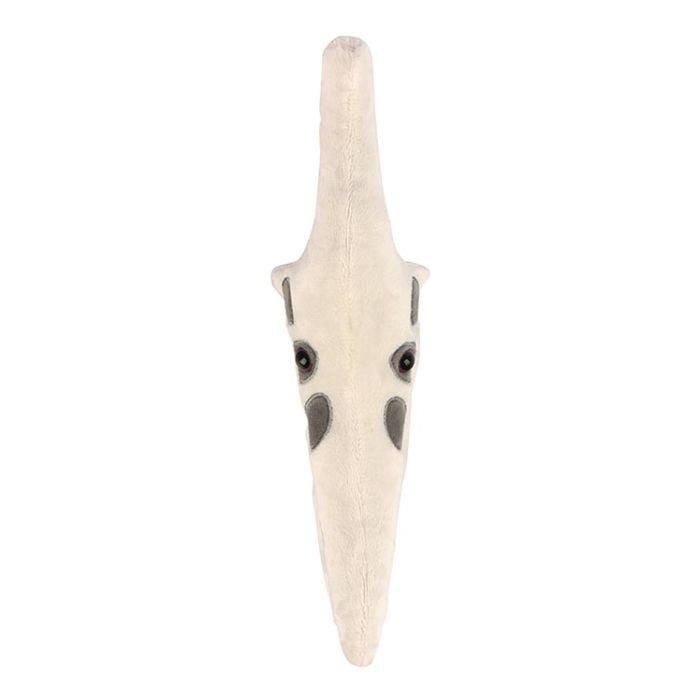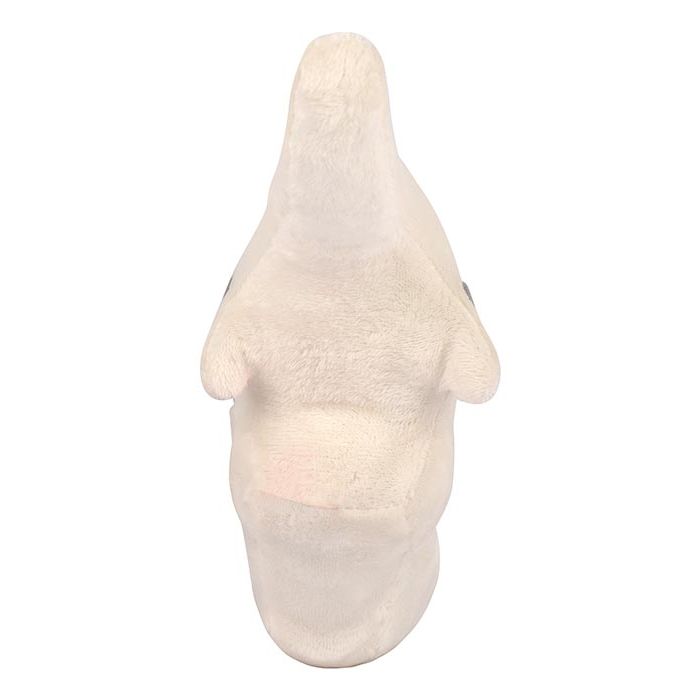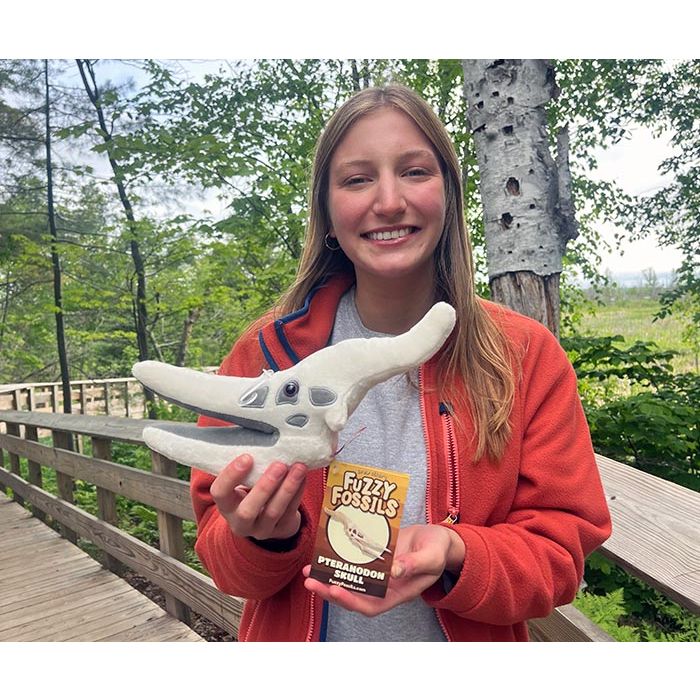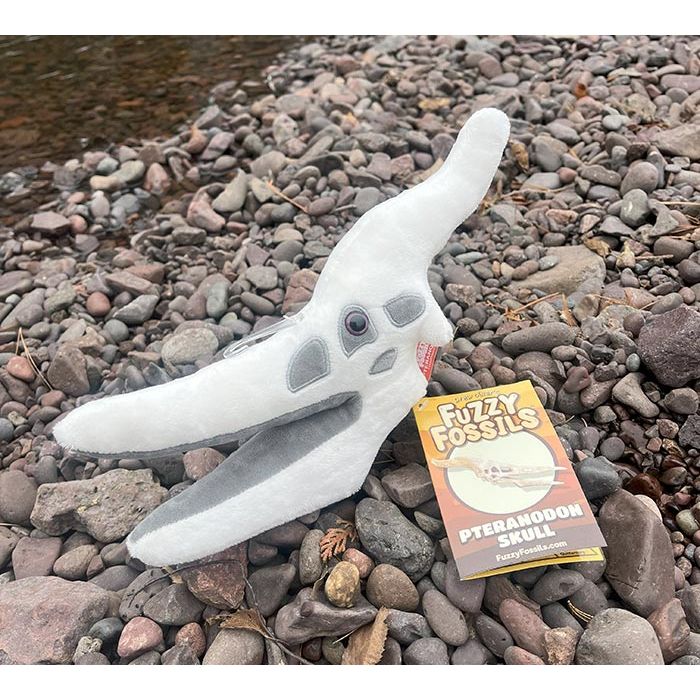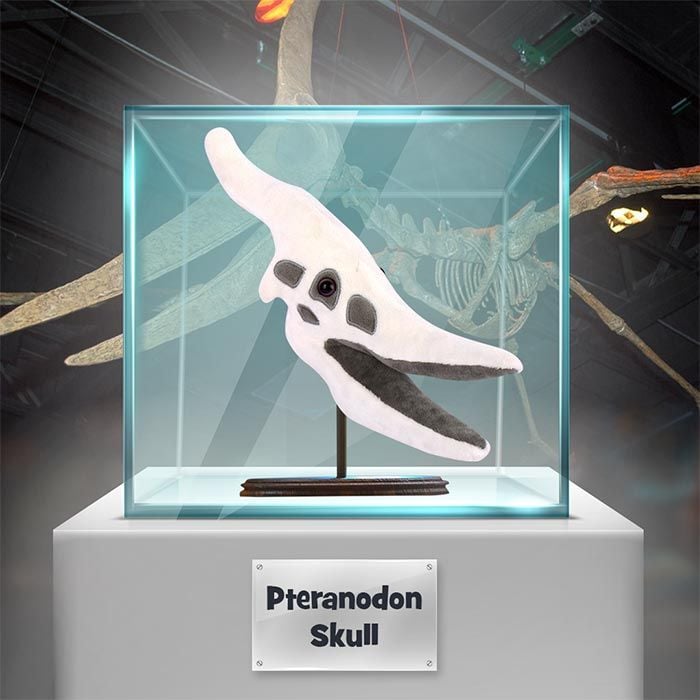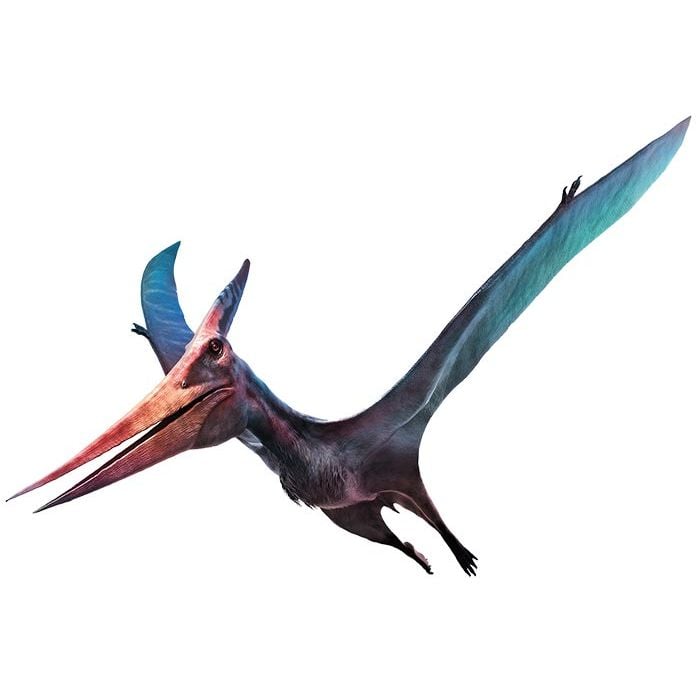Pteranodon Skull
Introducing a NEW brand from GIANTmicrobes - Fuzzy Fossils!
Pteranodon flew over the shallow seas hunting fish 70 to 65 million years ago. This remarkable reptile was well adapted for fishing with its 30-foot wingspan, long toothless jaw and streamlined skull ideal for diving into the water. Its triangular skull crest pointed backwards and its wings were formed by skin stretched over elongated fingers. The name pteranodon means “wings no teeth.”
Size: 30 x 13 x 8cm
Product Details
Additional Information
| Sizes | Giantmicrobes are based on actual microbes, cells, organisms and other critters, only 1,000,000 times actual size! Gigantic (GG) 40-60cm XL (XL) 25-38cm Original (PD) 12-20cm Minis (MM) 5-10cm each Keychain (KC) 5-10cm with clip |
|---|---|
| Materials | Plush from all new materials. Stuffed with polyester fiber fill. Surface washable: sponge with water & soap, air dry. |
| Packaging | Each plush microbe includes a printed card with fun, educational and fascinating facts about the actual microbe or cell. |
| Safety | Every product meets or exceeds U.S. and European standards for safety. For ages 3 and up. |
All about Pteranodon Skull

Pteranodon flew over the shallow seas hunting fish 70 to 65 million years ago. This remarkable reptile was well adapted for fishing with its 30-foot wingspan, long toothless jaw and streamlined skull ideal for diving into the water. Its triangular skull crest pointed backwards and its wings were formed by skin stretched over elongated fingers. The name pteranodon means “wings no teeth.”
Paleontologists know that pteranodon ate fish because fish bones were found in the fossilized body of one specimen. Since pteranodon bones were lightweight enough to enable flight, they did not fossilize as easily as most dinosaur bones. Thus, its fossils are rare and especially hard to find.
Pteranodon was not a dinosaur, rather it was a type of pterosaur, the fantastic flying reptiles that lived alongside the dinosaurs. Countless species of pterosaurs ruled the skies for over 100 million years.
Along with T. rex and most dinosaurs, pterosaurs went extinct when an asteroid crashed into Earth 65 million years ago. The shock waves, dust clouds, forest fires and acid rain were catastrophic for nearly all reptiles, whether they lived in the air, sea or on land. The survivors included a few small mammals and the dinosaurs that evolved into modern birds. Surprisingly, birds did not arise from pterosaurs, the dominate flying reptiles. Birds are effectively living dinosaurs!












